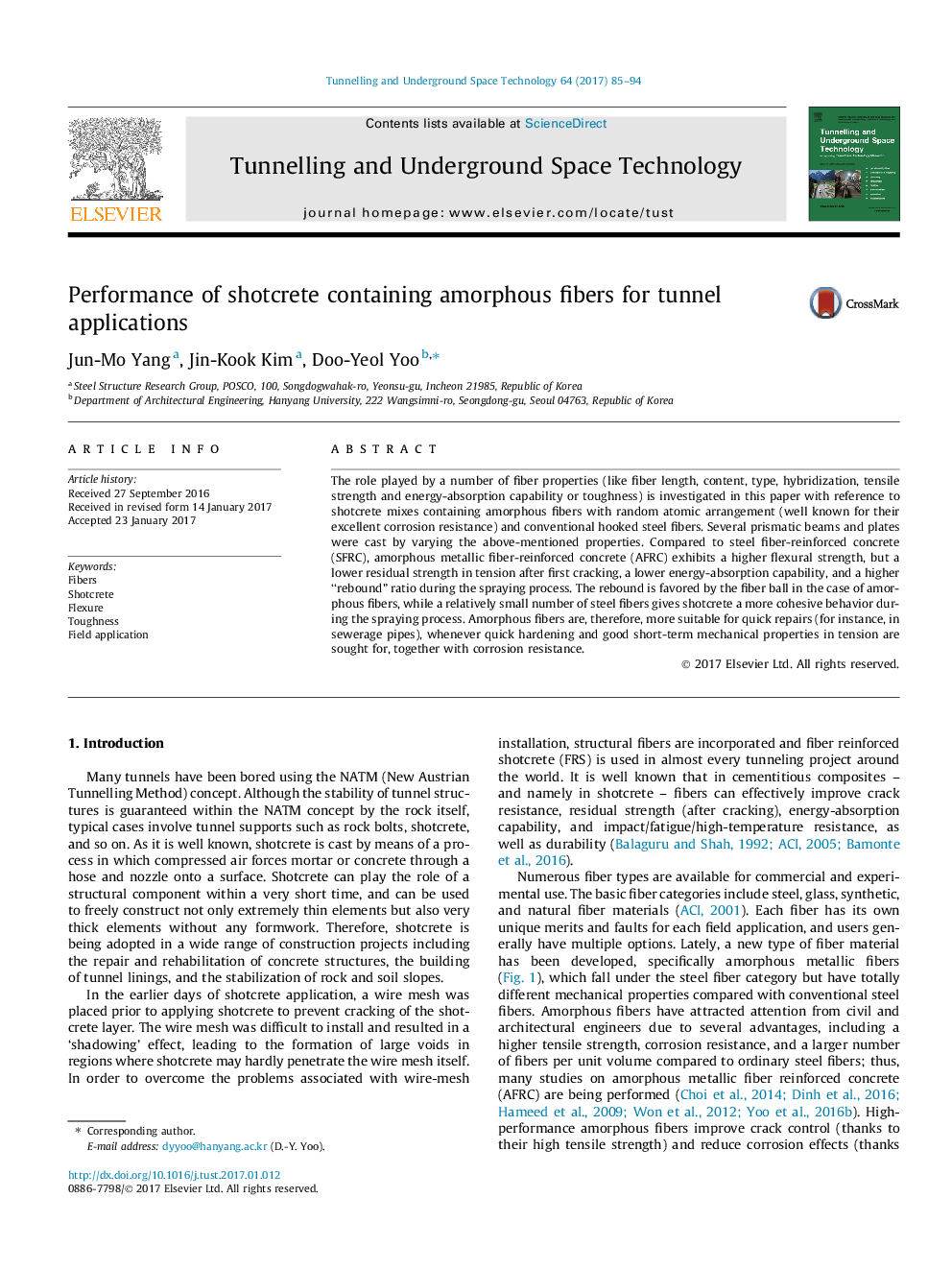| Article ID | Journal | Published Year | Pages | File Type |
|---|---|---|---|---|
| 4929312 | Tunnelling and Underground Space Technology | 2017 | 10 Pages |
Abstract
The role played by a number of fiber properties (like fiber length, content, type, hybridization, tensile strength and energy-absorption capability or toughness) is investigated in this paper with reference to shotcrete mixes containing amorphous fibers with random atomic arrangement (well known for their excellent corrosion resistance) and conventional hooked steel fibers. Several prismatic beams and plates were cast by varying the above-mentioned properties. Compared to steel fiber-reinforced concrete (SFRC), amorphous metallic fiber-reinforced concrete (AFRC) exhibits a higher flexural strength, but a lower residual strength in tension after first cracking, a lower energy-absorption capability, and a higher “rebound” ratio during the spraying process. The rebound is favored by the fiber ball in the case of amorphous fibers, while a relatively small number of steel fibers gives shotcrete a more cohesive behavior during the spraying process. Amorphous fibers are, therefore, more suitable for quick repairs (for instance, in sewerage pipes), whenever quick hardening and good short-term mechanical properties in tension are sought for, together with corrosion resistance.
Related Topics
Physical Sciences and Engineering
Earth and Planetary Sciences
Geotechnical Engineering and Engineering Geology
Authors
Jun-Mo Yang, Jin-Kook Kim, Doo-Yeol Yoo,
